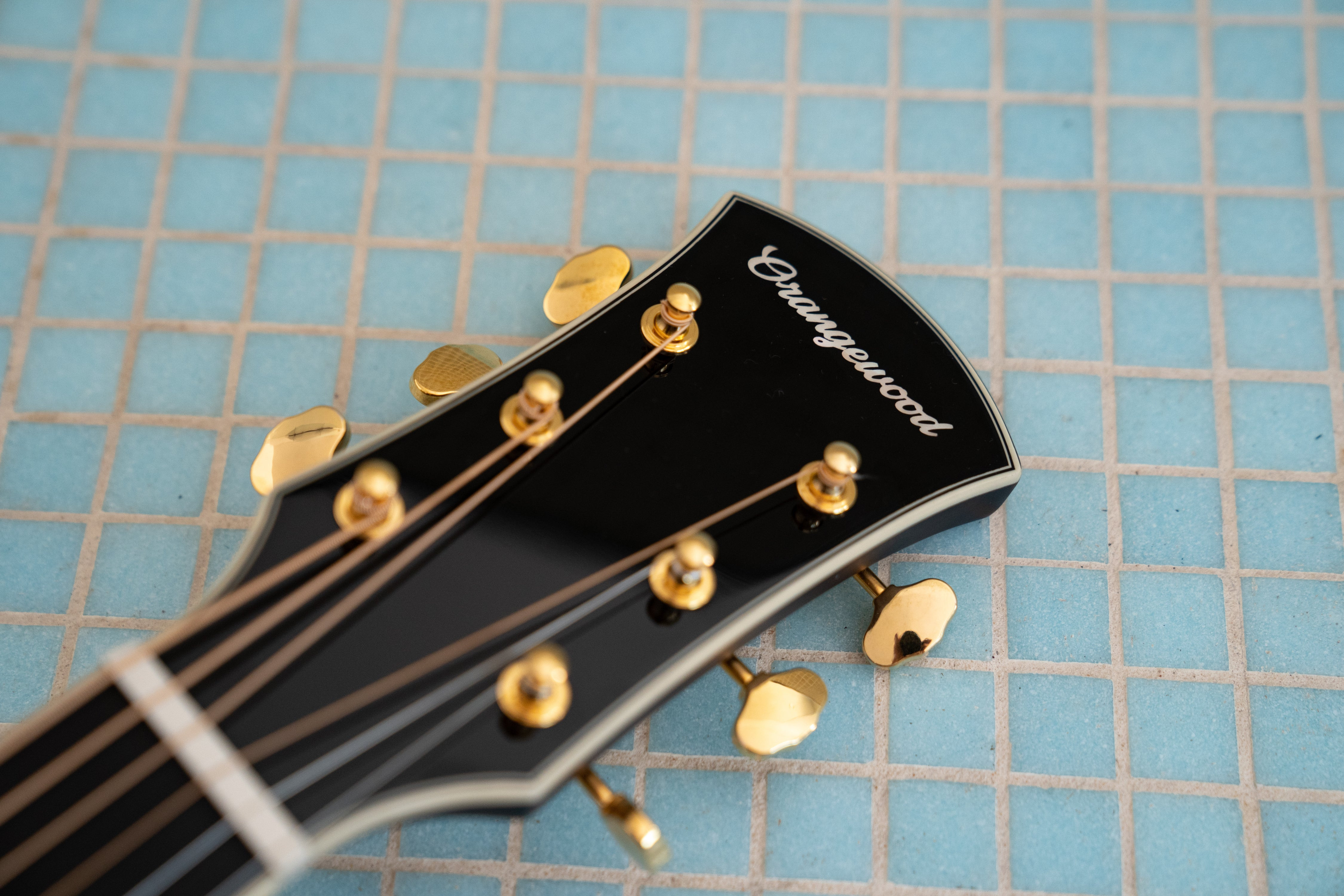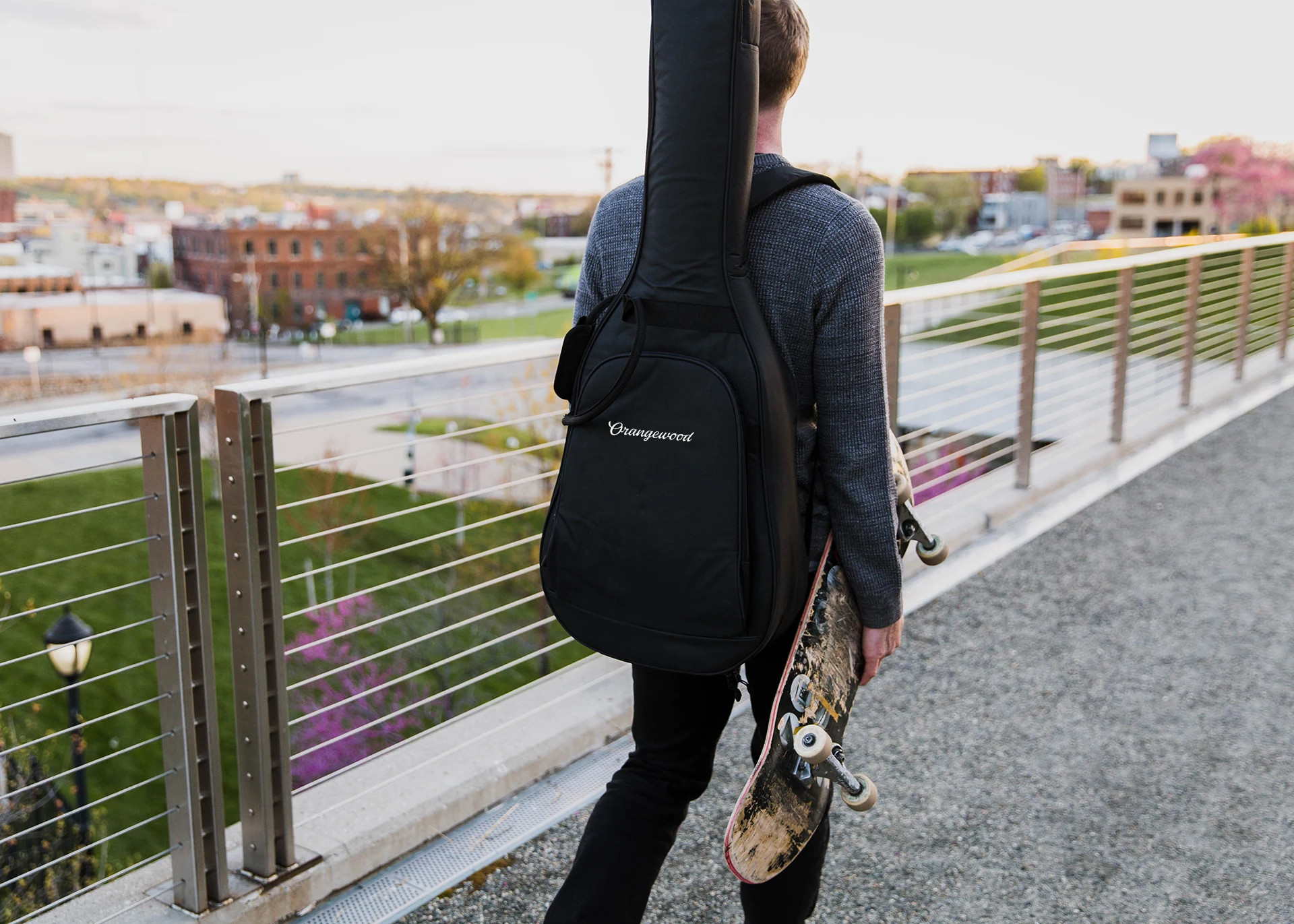Embarking on a journey with your guitar, whether for a grand tour or a comforting trip home, should be an exciting experience, not a stressful one. The thought of your beloved instrument, your baby, enduring the rigors of air travel can be daunting. But with the right preparation and knowledge, flying with your guitar can be smooth and worry-free.
To ensure your musical companion arrives safely at your destination, we’ve compiled essential tips for traveling with your guitar. Remember, airline policies regarding musical instruments vary. Always verify the specific regulations with your airline before your flight to guarantee a harmonious journey for you and your guitar.
Essential Travel Gear for Your Guitar
Stepping out of the secure environment of your home or studio, your guitar faces a multitude of challenges in airports and airplanes, from fluctuating temperatures to cramped spaces and unfamiliar handling. Fortunately, a few key accessories can significantly mitigate these risks and make traveling with your guitar much less nerve-wracking.
First and foremost, humidity control is paramount. A quality two-way humidity control kit is a must-have for any Traveling Guitar. These kits, easily placed inside your guitar case, regulate moisture levels, protecting your instrument from damage caused by cabin temperature variations and humidity shifts during flight.
Of course, a suitable case is non-negotiable when traveling with a guitar. It’s the first line of defense against bumps, scratches, and the general wear and tear of travel. The crucial decision is whether to opt for a gig bag or a hard shell case, a choice that largely depends on how you intend to transport your traveling guitar on the plane.
Gig Bag vs. Hard Shell Case for Air Travel
 Hard shell guitar case
Hard shell guitar case
The question of gig bag versus hard shell case for your traveling guitar hinges on whether you plan to check it or carry it on. For guitars that will be checked as baggage, a hard shell case is not just recommended—it’s essential. Checked baggage handling can be rough, and a hard shell case offers the robust protection needed to withstand the journey. While a standard hard shell case provides good protection, specialized travel cases designed for air travel offer an even higher degree of security.
For those aiming to carry their traveling guitar onto the plane, a soft shell gig bag becomes a more practical choice. Gig bags are lighter, less bulky, and often more affordable. Their flexibility makes them easier to fit in overhead compartments or under the seat, increasing the chances of keeping your guitar with you onboard.
$125.00
MONO Vertigo™ Acoustic Guitar Case
$215.99 $269.99
Securing Your Guitar Case: Locks and TSA Compliance
Considering a lock for your guitar case adds another layer of security. If you choose to lock your case, especially for checked baggage, ensure it’s a TSA-compliant lock. These locks can be opened by the Transportation Security Administration (TSA) using a master key, avoiding the risk of your lock being cut if a security inspection is required. If your case has non-TSA compliant locks built-in, it’s advisable to leave them unlocked when flying to prevent any potential issues.
Preparing Your Guitar for Air Travel
 Loosening guitar strings before travel
Loosening guitar strings before travel
Before heading to the airport, it’s crucial to prepare your guitar for “airplane mode.” This pre-flight routine minimizes potential damage from the stresses of air travel.
Firstly, loosen the strings of your guitar. Temperature and pressure variations during flights can cause guitar strings to tighten and potentially snap, or put undue stress on the neck. Detuning your strings a half step or a full step provides the necessary slack to prevent such issues.
Next, provide extra cushioning for your guitar within its case. Wrap your guitar in soft fabric like a hoodie, bubble wrap, or even newspaper to protect it from impacts. This is particularly important if there’s extra space in your case, preventing the guitar from shifting around. Also, place a cloth or paper between the strings and fretboard to prevent fret scratches.
Finally, secure or remove any loose items inside the guitar case. Guitar picks, capos, tuners, and other accessories should be stored in a separate compartment or bag. Loose items can move around during transit and potentially damage your instrument. Consider using a dedicated accessory case to keep everything organized and secure.
Navigating Guitar Transport Options on a Plane
There are primarily three ways to transport your traveling guitar on an airplane: as checked baggage, as carry-on luggage, or by purchasing a separate seat. The best option depends on your budget, your preference for hands-free travel, and the level of oversight you want over your guitar’s journey.
Checking Your Guitar as Baggage
For travelers who prefer a hands-free airport experience, checking your guitar is an option. However, it’s critical to use a hard shell case for checked guitars, and some airlines even mandate it.
For added safety when checking your traveling guitar, consider gate-checking it rather than checking it at the regular luggage counter. Gate-checking means your guitar is handled less and often stored separately, reducing the risk of rough handling.
Before handing your guitar over to airline staff, thoroughly inspect it and take photos documenting its condition. This pre-flight documentation is invaluable if you need to file a damage claim against the airline later.
Travel insurance is also worth considering. While no one wants to imagine their guitar being lost or damaged, travel insurance provides a safety net and can cover potential losses or repair costs.
Carrying Your Guitar Onboard
 Carrying guitar onboard
Carrying guitar onboard
While smaller instruments like ukuleles or travel guitars are more easily accommodated as carry-ons, bringing a full-sized guitar as carry-on can be more challenging. Space limitations in overhead bins and under seats can lead to gate agents forcing you to check your guitar at the last minute.
To maximize your chances of successfully carrying on your traveling guitar, consider these strategies:
- Research Overhead Bin Dimensions: Before your flight, check the airline’s website or resources like SeatGuru to find the specific aircraft type for your flight and research its overhead bin dimensions. Ensure your guitar case will fit.
- Check-In Early: Checking in early often grants you an earlier boarding group, giving you priority access to overhead bin space.
- Priority Boarding Upgrade: If you can’t secure an early boarding group, consider purchasing a priority boarding upgrade. This allows you to board earlier and increases your chances of finding space for your guitar.
- Travel Guitar Advantage: Opting for a travel guitar, or mini guitar, significantly increases your chances of carry-on success. These smaller guitars are designed for portability and fit more easily into tight spaces.
$225.00
$135.00
If all else fails, a polite request to a flight attendant to store your guitar in the crew’s storage area might be successful. Many flight attendants are accommodating if approached respectfully.
Buying a Seat for Your Guitar
For ultimate peace of mind when carrying on your traveling guitar, consider purchasing a separate seat for it. Most airlines permit passengers to buy a second seat for fragile items, and sometimes offer reduced fares for this purpose.
While this is the most secure option, it’s also the most expensive. Additionally, certain restrictions apply. Your guitar must be placed next to you, not in an emergency exit row, and cannot obstruct any signage. Always confirm the specific policies with your airline when considering this option.
Travel Day Essentials for Guitarists
With your guitar prepped and your transport plan in place, here’s how to navigate your travel day smoothly.
Arrive at the airport with ample time. Security checks with a musical instrument can take longer. Guitars often require physical inspection by TSA, so expect a potentially slower security process. If you’re carrying your guitar on, arriving early is even more critical to secure overhead bin space.
Upon arrival at your destination, thoroughly inspect your guitar again. If any damage occurred during transit, immediately file a damaged items claim at the airport. Addressing any issues promptly at the airport simplifies the claims process.
Enjoy Your Musical Journey with Confidence
Traveling with a guitar doesn’t have to be stressful. With the right knowledge and preparation, you can confidently bring your music wherever you go. We hope these tips empower you to travel with your guitar worry-free, ensuring your instrument arrives safely and ready to play.
Safe travels and happy playing from guitarplayers.net!

